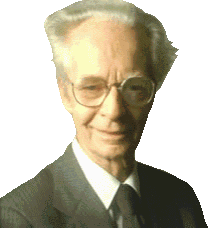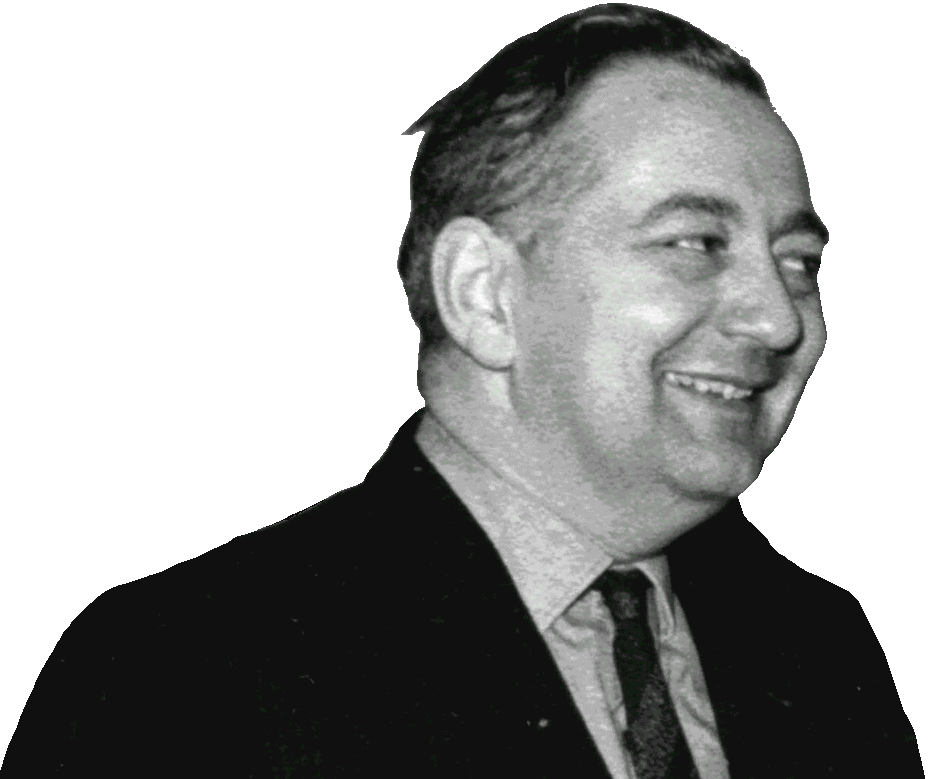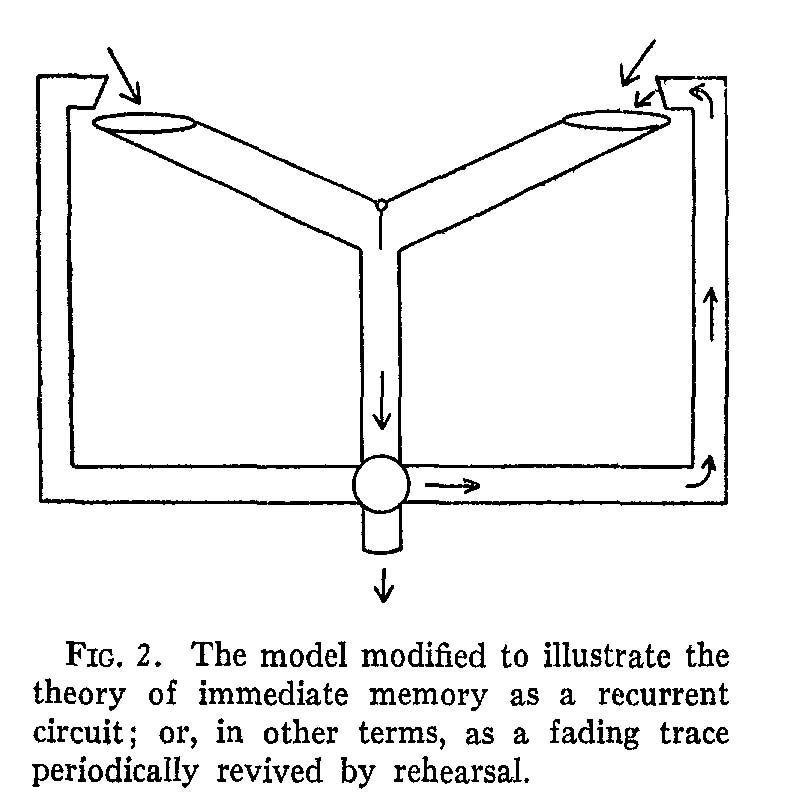Psychology’s Movement
Toward Cognitive Science
The progression between psychological schools of thought
in this brief history emphasizes three trends: First, psychology progresses through the development, evaluation, and
integration of experimental methods into psychology. Second, psychological schools of thought move
from emphasizing the conscious, qualitative aspects of mind and mental
processes to emphasizing characterizations of the mind and mental processes in
terms of informational processing. Third,
psychologists develop and adapt experimental techniques in order to more
reliably explore those elements of their information processing models not
directly observable by experimenters. The
development of experimental methodologies, the refinement of animal and other
models, increased knowledge of human mentality, development, and physiology,
and the development of technical ideas such as information and computation
ultimately coalesce, allowing for the conceptual framing of cognitive phenomena
as well as its systematic experimental investigation.
In our
discussion the development of physiology, I emphasize
that physiology introduces a strong empirical and experimental emphasis to psychology. Indeed, many early psychologists receive their training from physiologists and anatomists. Consistent with that idea, I begin the
discussion of the development of psychology towards cognitive science with the development of an experimental technique that has proven quite central to psychology—reaction
time.
Reaction
Times and Mental Chronology
Reaction
time is the time it takes from the initial presentation of stimulus until
the subject reacts. For instance, the time between a light flashing and a
subject pressing a button would be that subjects reaction time for that
stimulus-response pairing. Reaction time measurement begins with Friedrich Wilhelm Bessel (1784-1846), a German astronomer and Gymnasium drop-out. The controversy regarding disparate observations of transit times
between the astronomers Maskelyne and Kinnebrook,
and later between Enckes and Gauss intrigues Bessel. Transit times are
measurements of how long it takes stars to cross hairlines in
telescopic observations, indicating the time it takes the star to pass over the meridian of the
observatory. Astronomers use transit times for a star to determine the coordinates of the star.
Precise measurements of star coordinates are becoming increasingly important in
the 1700s and 1800s, both for the astronomers and also because nautical tables of the time rely upon coordinate information for stars.
Twenty years after the original dispute (1821), Bessel both analyzes the observations of different astronomers and performs
the simple
experiment of comparing observations between observers using the same equipment.
Bessel determines that skilled astronomers will vary consistently in their observations of
transit times. As a result, Bessel introduces the notion of an “involuntary constant difference,” in describing his findings in the preface to the eighth volume of his
Astronomische Beobachtungen1(1823).
In astronomy, the phenomena now commonly goes under the name
introduced by John Pond (1767–1836) in 19332, as the “personal
equation.” It is not an exaggeration to describe this work as the first experimental quantitative measurement of
reaction time, and it eventually results in the first attempt to control both
for reaction time and also for individual differences in scientific
observation. The German physiologist, Hermann Ludwig Ferdinand von Helmholtz (1821-1894)
published his “On the Rate of Transmission of the Nerve Impulse”3 in 1850. The Swiss astronomer Adolph Hirsch (1830-1901)
publishes his “On the Speed of Mental Processes,” (1862) in which he 4
|
…was
the first (1) to use Hipp's chronoscope in scientific literature, (2) to study
reaction time in connection to psychological interest, and (3) to study
velocity of conduction in humans with appropriate techniques. Using Hipp apparatus, Hirsch showed differences
in time for manual response (1) to auditory, visual, and tactile stimulation; (2) between observers; (3) in Hirsch's own results when fresh and when
fatigued; (4) according to the locus of tactile stimulation and the hand used for response; and (5) according to whether the stimulus was expected or
unexpected. Moreover, observations made on one of his colleagues relate the conduction speed in nerves, from which he
concludes that the differences in reaction time were due to the varying lengths of nerves. The speed of transmission in sensory nerves was evaluated by Hirsch
at about 34 m/s. (p.261) |
Franciscus Cornelis Donders (1818-1889) is usually cited as the first researcher
to use differences in human reaction time to infer differences in cognitive processing
time. Building on the work of his
graduate student, Johan Jacob De Jaager,5 and with an
awareness of earlier work by Helmholtz and Hirsch, Donders uses the same
subtraction method employed by Helmholtz, to make inferences about the times of
various mental processes. In 1868, Donders publishes “On the Speed of Mental Processes,”6 in which he shows that a simple reaction time
is shorter than a recognition reaction time, and that the choice reaction time
is longest of all. Using these times, Donders makes inferences as to the speed of mental processes through
subtraction: recognition = (recognition reaction time - simple reaction time).
Donders' results are an instance of mental
chronometry, i.e., the study of the relative speed and temporal
sequencing of mental process under some specified set of conditions. The ideas of subtraction, mental chronometry,
and reaction time are now part of the central methodological framework of cognitive psychology.
The next experimental technique, introspection, has a less venerable history.
|
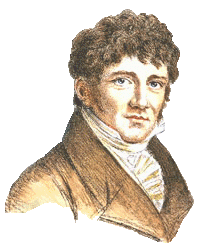
|

|
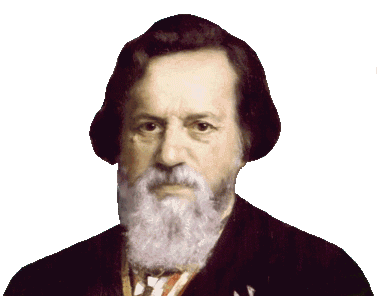
|
|
Friedrich Wilhelm Bessel (1784-1846)
|
Hermann von Helmholtz (1821-1894)
|
Franciscus Cornelis Donders (1818-1889)
|
|

|
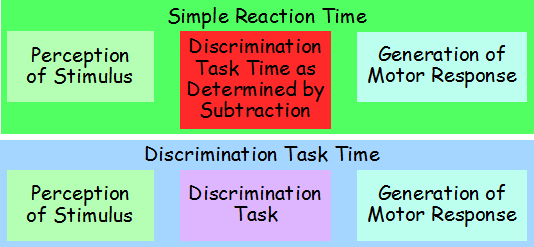
|
|
A chronoscope built by the Swiss inventor
Matthias Hipp in 1888. Early psychological
and physiological researchers used chronoscopes to measure reaction times in
their experiments. This chronoscope is
accurate to 1/1000th of a second.
|
Diagram illustrating the subtraction
technique. A researcher takes two
tasks that differ only by one component task.
In this case, the first task is a simple reaction task composed of a
perception task and a motor response task.
The second task is a discrimination task composed of a perception
task, a motor response task, and the discrimination task. The researcher determines the mean time for
subjects to complete each task. Subtraction
of the simple reaction time from the discrimination task time to yield the
time of the discrimination task alone.
|
Introspection and
Introspection-Based Psychologies
The technique of introspection
enters psychology through the work of Wilhelm Maximilian Wundt, (1832-1920) a
German physician, psychologist, physiologist, and university professor. Wundt, Titchener, and Brentano are often
portrayed together under the title of introspectionist psychology. However, as we will see, these theorists differ
significantly in their theoretical perspectives as well as their use of
introspection.
|
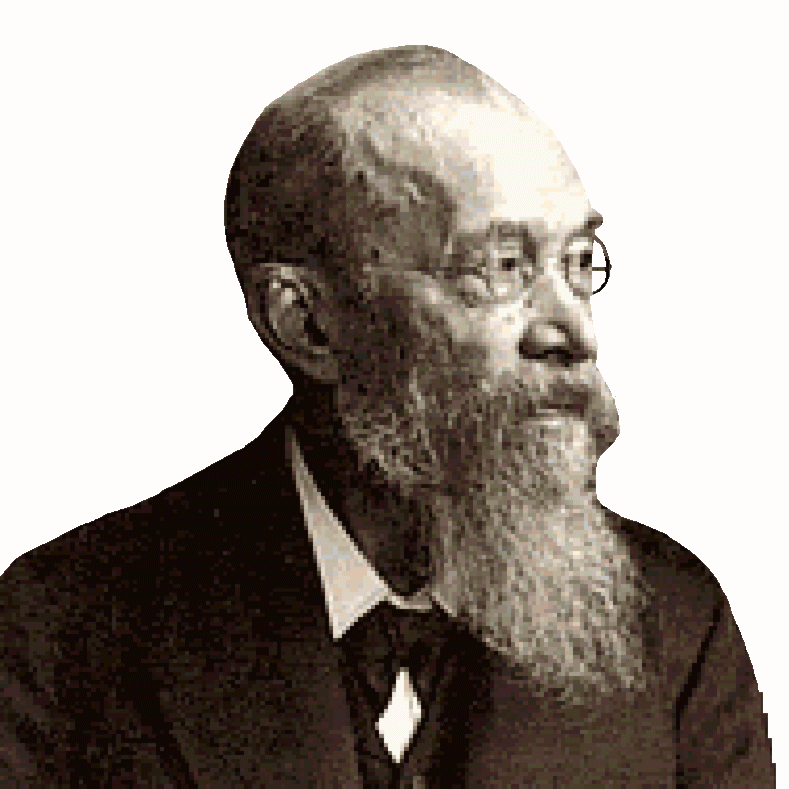
|
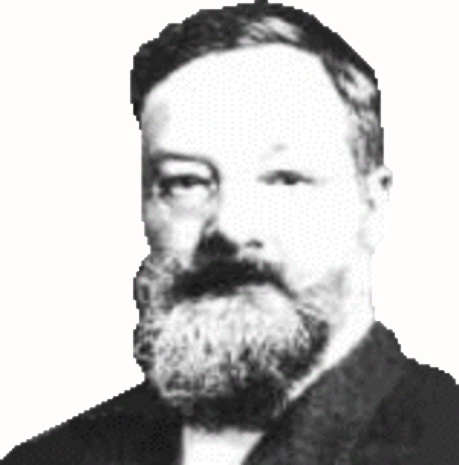
|
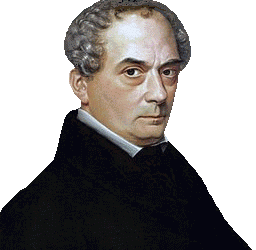
|
|
Wilhelm
Wundt (1832-1920)
|
Edward
Titchener (1867-1927)
|
Franz Brentano
(1838-1917)
|
Introspectionist
Psychology: Voluntarism
Wundt creates the first laboratory explicitly dedicated to psychological research (as opposed to
labs for teaching demonstrations) at the University of Leipzig
in 1879. He also begins the first journal for psychological research in 1881. If Freud is the “father of Psychiatry,” Wundt is likely the “Father of
Experimental Psychology.”
Wundt studies under Müller and Helmholtz prior to writing his first book,
Beiträge
zur Theorie der Sinneswahrnehmung (Contributions to the Theory of Sense
Perception)7 (1862). He follows this book with his second,
Vorlesungen über die Menschen -und Tierseele
(Lectures on
Human and Animal Psychology)8
(1863). Wundt has founded the first school of psychological thought by 1986 and
1897when he publishes Grundriss der
Psychologie (Outline
of Psychology) and Grundzüge der
physiologischen Psychologie (Principles of Physiological
Psychology).9 Ironically, Wundt’s success at training a new group experimental psychologists leads to a
distortion of his own views. One Wundt’s students, Edward Titchener (1867-1927), actively, but misleading, associates
Wundt’s view with Titchener’s own view, structuralism. Wundt names his view voluntarism,
and as we will see, it differs somewhat from the typical views attributed to
structuralism.
Wundt equates mentality with consciousness--to have
a mind requires that one has conscious experiences. Wundt holds that experimentation can help one to understand
simpler conscious phenomena, but not more complex phenomena. Essentially, Wundt limits psychology to studying
emotions and what contemporary cognitive scientists call sensation and perception.
For
Wundt, one must employ historical analysis and naturalistic (non-experimental)
observation to understand higher mental functioning such as reasoning, language
use, religious experience, etc..
As regards simpler conscious phenomena, Wundt distinguishes and studies two
kinds of sensation and emotion. Wundt studies perception--passive and involuntary combining multiple
sensations--and apperception--active voluntary
perception involving attention. He seeks
the fundamental constitutive elements of conscious mentality and the rules by
which these elements combine into more complex experiences. In this way, Wundt follows the mental
chemistry model of the mind that one finds in the British Empiricists. However, for Wundt attention and the will act
as a sort of catalyst making apperception active. Thus, Wundt differentiates himself from the
British Empiricists, in part, because of his introduction of an active,
volitional component to the mental chemistry account. In recognizing the role of attention in how people
perceive the world, Wundt anticipates the sorts of perceptual phenomena that
later psychologists (e.x. Gestalt Psychologists) come to recognize as crucial to
perception. In contrast, Wundt’s exclusion of higher mental
functioning from the domain of scientific studies of the mind differs from other
atomists.
Wundt breaks mental elements into two
categories; sensations and feelings. Sensations are the result of stimulation of the sense
organs. Each sensation has an intensity (ex. bright vs dim) and a modality (touch, taste, etc.).
Modalities have associated qualities such as
sweet and sour for taste. Feelings are distinct from sensations but co-occurring.
Wundt proposes a tridimensional account of feelings in which feelings have values along three
orthogonal dimensions; pleasantness-unpleasantness,
excitement-calm, and strain-relaxation.
|
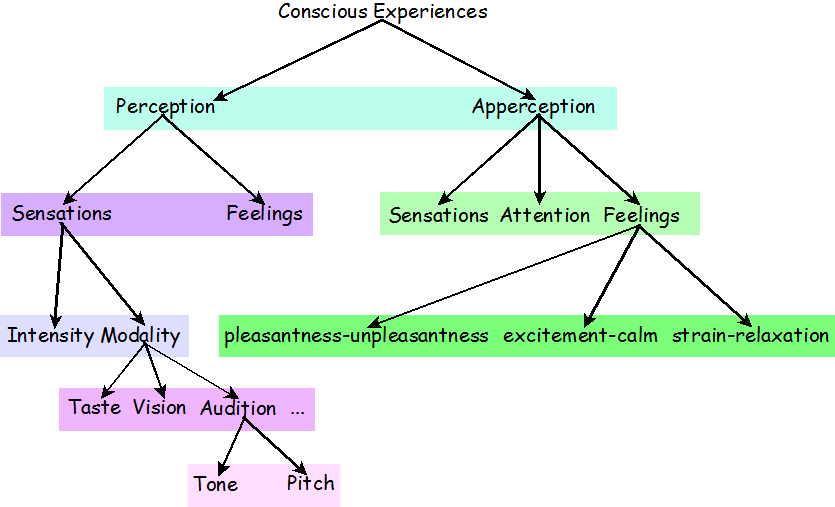
|
|
Diagram
depicting Wundt’s theory of conscious experience. Wundt divides conscious experiences into
two kinds; passive perception and active apperception. Perception consists to two elements;
sensations and feelings. Apperception
consists of the elements of sensations and feelings together with
attention. Sensations have two
components (depicted on the right); intensity and modality. Each modality has qualities; in this case,
audition has tone and pitch. Feelings
(depicted on the left) vary along three orthogonal dimensions; pleasantness-unpleasantness,
excitement-calm, and strain-relaxation.
|
In order to study perception and apperception,
Wundt adopts two primary experimental techniques for studying these simple conscious phenomena; introspection
and reaction time. Reaction-time enters Wundt’s experimental repertoire
from Helmholtz and Donders. However, he eventually abandons the use of reaction time as too unreliable
for gathering data. For Wundt introspection provides immediate observation
of mental phenomena—direct observation unmediated by measuring and recording
devices. Unlike many other psychologists who follow him, Wundt uses introspection in a highly constrained fashion
in keeping with its use in physiology and psychophysiology. Wundt often
presents stimuli to experimental subjects, asking them to provide only yes or no answers
to signify whether they are experiencing a sensation. However, Wundt does
insist that subjects must be trained in
introspection to learn the appropriate categories.
Introspectionist Psychology:
Structuralism
Edward Titchener (1867-1927) is an English student of Wundt who comes to Cornell University where he continues
Wundt’s general project of trying to identify the elements of simple human consciousness and their interactions.
However, Titchener’s views and methods differ significantly from
Wundt’s. Unlike Wundt, Titchener seeks to apply the lens of experimental psychology to higher order mental phenomena
as well as simpler conscious phenomena. Titchener views experimental psychology as generating a morphological account of mental experiences—that
is, an account of the elements and composite structure of conscious mental experiences.
In his article, “
The Postulates of a Structural Psychology"10 (1898), Titchener tells readers that,
|
The primary aim of the experimental psychologist has been
to analyze the structure of mind; to ravel out the elemental processes from the tangle of consciousness, or (if we may change the metaphor) to isolate the
constituents in the given conscious formation. His task is a vivisection, but a vivisection which shall yield structural, not functional results. He tries to
discover, first of all, what is there and in what quantity, not what it is there for. (p.450) |
Likewise, Titchener differs from Wundt in that Titchener rejects the idea of an active volitional component of mental experiences.
Titchener rejects as unscientific volitional,
functional and teleological descriptions of mental processes at the psychological level.
Instead, Titchener follows the British Empiricists in supposing that psychology should create an account
of mental experiences in terms of structures created via the combination of basic elements through the mechanism of association.
Similarly, Titchener holds that mental
elements can only be known through their attributes. Titchener distinguishes three kinds of mental elements; sensations, images, and affections. Perceptions are composed of sensations, ideas are composed of images,
and emotions are composed of affections.
|

|
|
Diagram
depicting the Titchener’s structuralist account of conscious experiences.
Conscious experiences are composed of elements from three categories (in blue); perceptions, ideas, and
emotions. Each element has attributes (in green) that differentiates it and through which it is known. Perceptions and ideas have the attributes of quality, intensity, duration, clearness, and extensity.
Emotions have the attributes of quality, intensity, and duration.
|
Titchener’s use of introspection differs from Wundt’s in that it requires subjects to actively probe or analyze their
experiences to formulate reports. This requires extensive training. Titchener intends his training to cultivate an ability to observe and describe conscious
experiences without the tincture of “stimulus error.” Stimulus error occurs when subjects report their perceptions--reporting the meaning of the stimulus (or it’s conceptualization).
For instance, if a
subject saw an apple, the subject must report the hues, shapes, etc. of their
experience--they should not report seeing an apple or a fruit. This combination of indoctrination into
descriptive categories and active, even retroactive, analysis by subjects renders introspection even more methodologically problematic as an experimental
tool. In addition to the difficulties surrounding Titchener’s use of introspection, he also ignores as irrelevant numerous research areas where significant progress is
occurring. For instance, Titchener discounts animal behavior and evolution, abnormal behavior, learning, development, and inter-subjective variation.
Introspectionist
Psychology: Act Psychology
If you wish to find a
true introspectionist villain, Franz Clemens Honoratus Hermann Brentano (1838-1917) probably best fits that description. In his major work, Psychologie vom Empirischen Standpunkte11 or Psychology
from an Empirical Standpoint (1874), Brentano coins the term “intentionality” to characterize
his view that every mental act has an object to which it refers. For example, when someone sees an apple, they
see it as an apple, an object, and not merely as a qualitative experience.
Brentano tells readers:12
|
Every mental phenomenon is characterized by what the
Scholastics of the Middle Ages called the intentional (or mental) inexistence
of an object, and what we might call, though not wholly unambiguously,
reference to a content, direction towards an object (which is not to be
understood here as meaning a thing), or immanent objectivity. Every mental
phenomenon includes something as object within itself, although they do not all
do so in the same way. In presentation something is presented, in judgement
something is affirmed or denied, in love loved, in hate hated, in desire
desired and so on. This intentional in-existence is characteristic exclusively
of mental phenomena. No physical phenomenon exhibits anything like it. We
could, therefore, define mental phenomena by saying that they are those
phenomena which contain an object intentionally within themselves. (p.88-89) |
Brentano also eschews the study of static, simple
conscious experiences, framing mentality in terms of acts, that is, in terms of the mind being directed towards an object in order
to perform some function. Indeed, he holds that psychology should study mental processes in order to determine their
function.
Though Brentano never practices experimental psychology,
he does employ and advocate “phenomenological introspection,” in his theorizing about the nature of the mind and its processes.
In employing phenomenological introspection, the researcher either asks the
subject to analyze temporally extended processes such as inferences, or performs such an analysis themselves.
Though Brentano publishes very little, he influences many people, for instance, Freud.
The
Downfall of Introspectionist Psychology
It was the reliance upon introspection as their sole
experimental methodology, together with the implicit biases introduced by training subjects, and allowing
extended and retroactive introspective analysis that ultimately doomed
the methodological side of introspective psychology. Its practitioners make little to no effort to assess introspection’s calibration, or control for subject and experimenter
bias. Instead, perhaps naturally, they assume introspection is perfectly reliable across all of its methodological
uses. Quite to the contrary, introspection turns out to be relatively poorly calibrated and susceptible to massive subject and experimenter bias.
The behaviorists heavily criticize introspection as part of their rejection of the various forms of introspective psychology.
The contemporary uses of introspection, as a result, are highly
constrained and cross-validated. Indeed, Richard Nisbett and Timothy Wilson publish an influential literature
review in 1977,13 which still serves to highlight the perils of introspection.
As
we’ll see, the failure of introspection and the various schools of
psychological thought that rely heavily upon it also serves to shift the
emphasis from understanding the mind through conscious experience towards
understanding the mind through behavior and eventually cognition
Ebbinghaus: The Quantified Study of Memory as a Process
Hermann Ebbinghaus (1850-1909), begins one of the first systematic studies of memory in
1879. He studies only the ability to memorize nonsense syllables by rote.
He selects nonsense syllables since previous learning will not influence learning of these meaningless sounds.
This choice
represents one of his contributions to memory research, namely, that ease of memorization is increased by meaningfulness and relevance to the memorizer, and
vice versa. Ebbinghaus might have used some of his students as subjects, but he seems primarily to use only himself as a subject.
Ebbinghaus publishes his results in his book,
Über das Gedächtnis Untersuchungen zur Experimentellen Psychologie 14 or On Memory (1885), which is later translated and published as Memory:
A Contribution to Experimental Psychology15 (1913).
In On Memory Ebbinghaus reports results that are the basis for the “learning curve” and
the “forgetting curve.” The learning curve shows that learning time, measured as number of repetitions, increases exponentially
with the number of items memorized. Likewise, the increase in retention for each repetition decreases exponentially
so as to approach complete retention asymptotically. The forgetting curve is similarly exponential, showing the forgetting decreases at an exponential rate, so as to
approach complete failure of retention asymptotically. Specifically, R = e -t/s (where R = retention, t = elapsed time, and s = strength of original memory). Ebbinghaus
also documents the serial position effect, viz. the recency and primacy effects (subjects are more likely
to remember the last item in a series [recency] and the first item in a series [primacy]).
Likewise, Ebbinghaus documents “savings."
If one memorizes a list and then waits until recall is zero, one will still
generally relearn the list at a faster rate despite the seeming lack of recall.
Ebbinghaus terms the difference between the first and second memorization the savings.
Though Ebbinghaus is not prolific, does not identify himself with any psychological school of thought, and
does not seek out pupils, his work spurs research on memory. Ebbinghaus’ careful, well-designed experiments, his rigorous quantified results, statistical analysis, and
systematic presentation prove extremely influential.
|
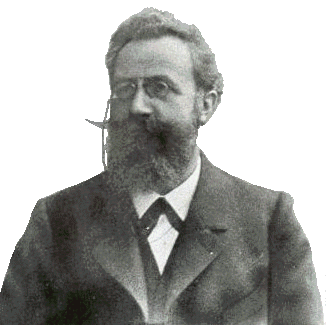
|
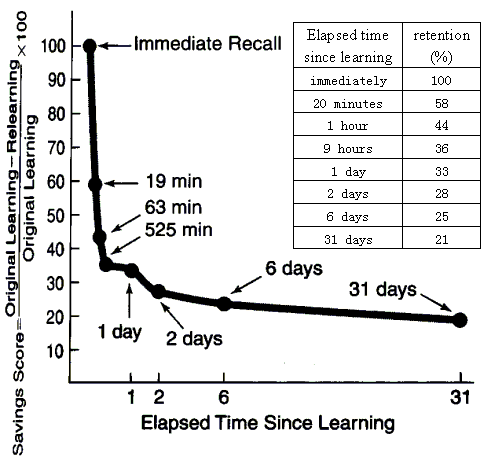
|
|
Hermann Ebbinghaus
(1850-1909)
|
Typical
graph depicting data on savings.
|
|
(Left)
Table from Ebbinghaus presenting data on savings.
|

|
Functionalism
Most historians
consider William James (1842–1910) the first figure in the first school of
psychology in the United States--functionalism. Functionalism
overlaps significantly with both structuralism and behaviorism. James’ text, The Principles of Psychology16(1890),
actually predates by two years Titchner’s arrival a Cornell. Principles, a two volume, twelve hundred page text, makes James as famous and widely studied as Wundt.
Functionalism, much like pragmatism, the philosophical
movement with which James is also associated, has no central figure, nor a clear-cut doctrine.
However, functionalists make important criticisms and contributions to other schools of psychological thought, and do share several common
general commitments. (1) Functionalists oppose the search for the basic elements of thought that characterizes Wundt’s and Titchener’s views.
In fact, Principles portrays mentality as a stream of
consciousness incapable of analysis into elements. (2) Functionalists, in contrast to voluntarists and structuralists, think of the mind as dynamic, and mental processes as serving functions.
(3) They view the function of mind through the lens of evolution. Thus, functionalists understand mental processes and behavior in terms of the general goals of adaptation and selectional advantage.
(4) Unlike the rather rigid determinism of structuralism and behaviorism, functionalism tends to emphasize adaptation and differential responses driven by motivation.
(5)
Methodologically, functionalists tend to accept both introspection and behavioral observation as methodological
tools. Though few early functionalists conduct experiments, later
functionalists do conduct experiments. Functionalists also support psychological research on animals,
children, and abnormal populations as a means to understand normal human mentality.
(7) Finally, unlike Wundt, who views psychology’s mission as pure basic research, functionalists tend to see psychology as a means to improve society and people’s lives.
|
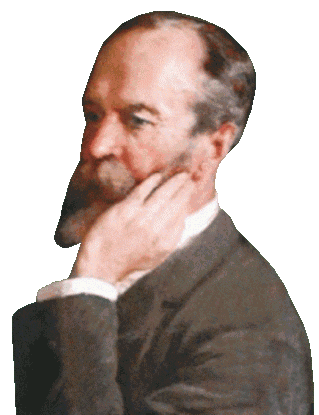
|
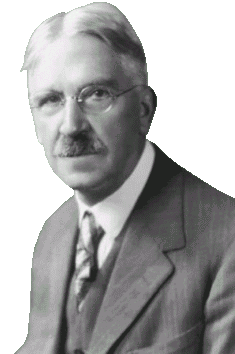
|
|
William
James (1842–1910)
|
John
Dewey (1859-1952)
|
The functionalists act as a counterweight to both
structuralism and behaviorism. For instance, historians often cite John Dewey’s “The Reflex Arc Concept in Psychology"17 (1896) as the beginning of functionalism.
In this article Dewey criticizes the notion of the reflex arc as consisting of discrete
stages; stimulus and response. He also anticipates challenges facing behaviorists by noting the difficulties in specify a context-free notion of stimulus and response,
i.e., specifications capturing the
relevant features of particular stimuli and responses as well as spcifications
which predict the generalizations to future cases. Furthermore, the functionalist emphasis on practical applications in psychology, evolution, and diversity in methodology
and research areas help to plant the seeds for cognitive science.
Historians classify Edward Lee Thorndike (1874-1949) as a functionalist.
However, much of his work is arguably the
first research on conditioning and is certainly the first work on operant conditioning.
Thorndike publishes his dissertation, “Animal Intelligence: An Experimental Study of the Associative
Processes in Animals,” in 1898--predating Pavlov’s first public reference to conditioned reflexes by approximately a year.
Thorndike republishes this work in 1911 as
Animal Intelligence.18
|
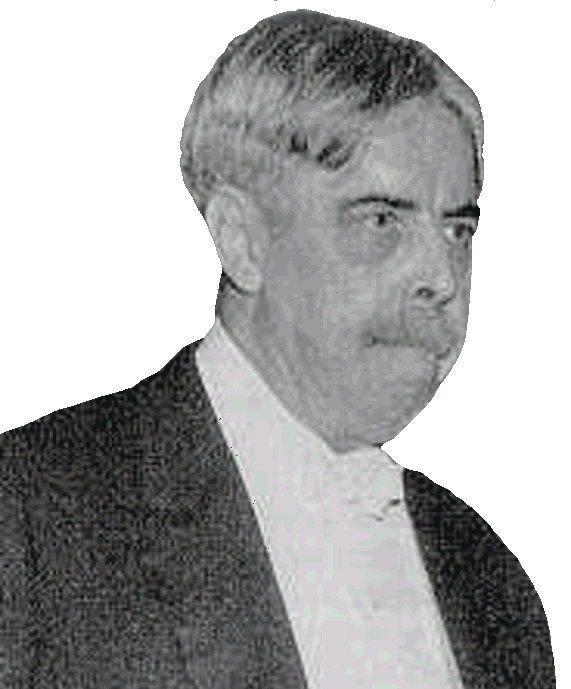
|
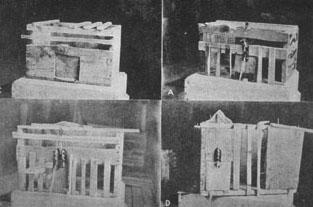
|
|
Edward Lee Thorndike (1874-1949)
|
Four
of Thorndike’s puzzle boxes.
|
Thorndike studies a number of animals, but he is most famous for his studies of learning in cats using homemade puzzle boxes (above).
Thorndike puts a cat in a box, and lets it behave randomly until it
stumbles upon the release mechanism. He repeats this procedure until the cat can release itself in negligible time.
Thorndike then plots the decline
in time to escape relative to times in the box, using this ratio to characterize learning by “learning curves.” He formulates his generalized results in
terms of the law of effect.18
|
The Law of Effect is
that: Of several responses made to the same situation, those which are
accompanied or closely followed by satisfaction to the animal will, other
things being equal, be more firmly connected with the situation, so that, when
it recurs, they will be more likely to recur; those which are accompanied or
closely followed by discomfort to the animal will, other things being equal,
have their connections with that situation weakened, so that, when it recurs,
they will be less likely to occur. The greater the satisfaction or discomfort,
the greater the strengthening or weakening of the bond. (p.244) |
Behaviorism:
Pavlov’s Discovery of Classical Conditioning
Ironically, it is
Ivan Pavlov (1849-1936), a Russian physiologist studying digestion, who
provides the key finding around which Behaviorism evolves--classical conditioning.
|
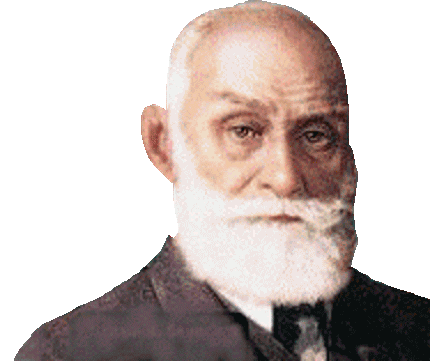
|
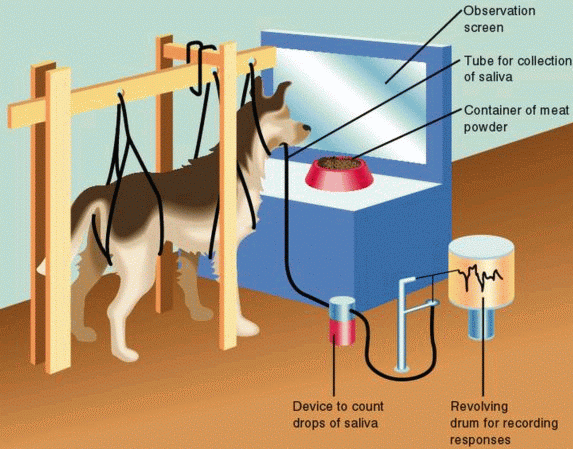
|
|
Ivan Pavlov (1849-1936)
|
Depiction of Pavlov’s experimental apparatus for his
studies of digestion. From http://www.simplypsychology.pwp.blueyonder.co.uk/classical-conditioning.html
|
Pavlov’s research includes the physiology and the
neurophysiology of temperament, conditioning, and involuntary reflex actions; but the bulk of his work focuses on digestion.
Pavlov’s experimental research on digestion was innovative and
sophisticated. Pavlov’s techniques include surgical removal of components of the digestive system from animals to
facilitate observations of their functions, lesioning nerve fibers to trace their function by observing the lesion’s effects, and implanting fistulas (tubes
or holes) draining into pouches to examine the organ's contents. In the 1890’s Pavlov’s lab is performing experiments on digestion using dogs.
Specifically, Pavlov’s group is studying the salivatory functions of
dogs by surgically externalizing a salivary gland so that the saliva could be collected and analyzed.
During their research Pavlov notices that the dogs begin to salivate before receiving
food. He calls this phenomena “psychic secretion”19 (p.7), and the lab begins to investigate this phenomena.
The researchers realize that these “psychic secretions” result from
associations between the food and other stimuli. These investigations eventually reveal what
Pavlov calls “conditioned reflexes,” and we now call classical conditioning.
|

|
A picture (left) of one of Pavlov’s dogs
complete with a fistula and collection chamber. From the Pavlov Museum in Russia. http://en.wikipedia.org/wiki/File:One_of_Pavlov%27s_dogs.jpg
|
|
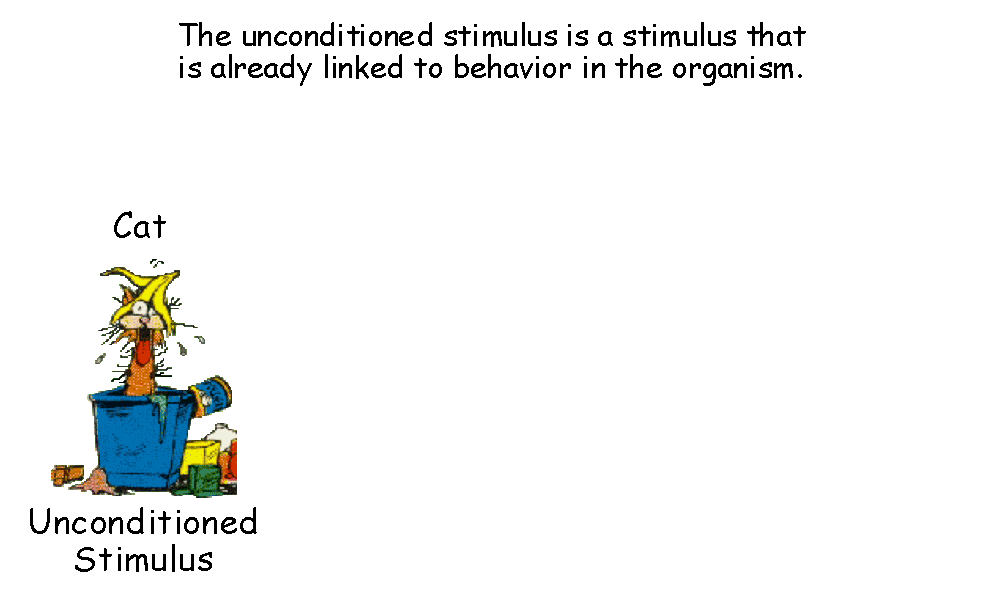
|
Animation
(left) depicting the elements and process of classical conditioning.
|
Pavlov first mentions his discovery in a lecture to the Society of Russian Doctors of St. Petersburg in 1899.
Printed accounts of the research appear in a
dissertation by Pavlov’s student, Wolfson, and in a report to the 1903 Congress of Natural
Sciences by Ivan Tolochinov,20 Pavlov’s collaborator. However, the discovery does not receive
significant attention until Pavlov discusses it in his Nobel Prize acceptance speech in 1904. Pavlov’s own account
does not emerge until he publishes, Conditioned
reflexes: An Investigation of the Physiological Activity of the Cerebral Cortex19 in 1927.
As illustrated in the diagram above, classical conditioning works by associating a stimulus that triggers a specific response
with a novel stimulus. Specifically, the unconditioned stimulus is a stimulus that elicits a particular
response called the unconditioned response. The conditioned stimulus is paired with the unconditioned stimulus
repeatedly so that the pairing elicits the unconditioned response. This repeated pairing increases the association between the conditioned stimulus and the unconditioned response, as
reflected in the increasing likelihood of the conditioned stimulus eliciting the response in and of itself, making the unconditioned response
a conditioned response.
Pavlov also discovers and studies extinction and spontaneous recovery. When one elicits the conditioned response using only the conditioned
stimulus, the association between the conditioned stimulus and conditioned response weakness over time.
This weakening is
called extinction. After an association between a conditioned stimulus and a conditioned response reaches extinction, the conditioned stimulus can
elicit a conditioned response at a later; such
cases are called spontaneous recovery.
Behaviorism: John Watson
John Watson (1878-1958) adapts the work of Pavlov into a general approach to psychology,
which he presents in his 1913 paper, “ Psychology
as the Behaviorist Views It”.21 Watson embraces the idea of classical conditioning and sets the goal of psychological investigation as the prediction
and control of behavior. Additionally, Watson explicitly rejects the project of analyzing conscious experience, and the methodological tool of introspection.
Watson
describes his view as follows:21
|
Psychology as the behaviorist views it is a purely objective experimental branch of natural science. Its theoretical goal is the
prediction and control of behavior. Introspection forms no essential part of its methods, nor is the scientific value of its data dependent upon the readiness with which they lend themselves to interpretation in terms of
consciousness. The behaviorist, in his efforts to get a unitary scheme of animal response, recognizes no dividing line between man and brute. The behavior of man, with all of its refinement and complexity, forms only a part
of the behaviorist's total scheme of investigation. (p.158) |
While Watson emphatically distances behaviorism from introspectionist psychologies, there are strong similarities under the surface.
Watson limits the appropriate phenomena of psychology to behavior, and sets the goals of
behaviorism as prediction and control of behavior. However, in practice Watson’s treatment of behavior is quite atomistic.
Watson divides behavior into four classes; explicit learned behavior such as
riding a bicycle, implicit learned behavior such as a rumbling stomach when smelling someone else’s dinner cooking, explicit unlearned behavior such as pulling your hand
away when it is hurt, and implicit unlearned behavior such as sweating when it is hot.
For the purposes of this class, we’ll focus upon Watson’s theoretical framework for the prediction and control of learned
behavior. Watson hypothesizes that explicit, complex learned behaviors--such as chess playing or language—can be understood as a series of simpler learned and unlearned behaviors
performed in a sequence cultivated by imitation and
classical conditioning. Simple learned behaviors are explained in terms of the environment, unlearned behaviors, and conditioning history.
For instance, implicit learned behaviors (like a fear response)
develop from simple conditioning and appropriate environmental ques. As Watson tells readers of his text, Behavior: An Introduction to Comparative
Psychology22(1914):
|
It is useless to ask young children to imitate acts as wholes where the elementary coördinates are lacking
or are ill-formed. There must be complete mastery of simple habits,--a readiness to respond to a difficult and complex environmental setting in a variety of ways—the ability to change
responses ever so slightly to meet the slightest change in a heretofore well-known object. In order to do this our stock in trade of acts must be much more numerous than the objects to which
we respond. … Apparently new coördinations are not established by imitation either in man or in animal. What is new is the combination or method of grouping. Where imitation appears there are found always groups of flexible
responses to every object worked with. (p.49) |
|

|
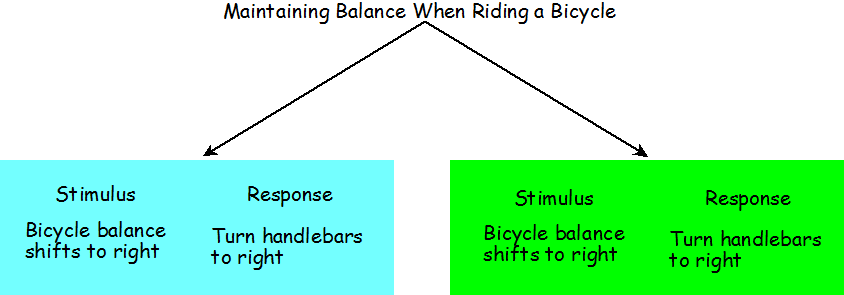
|
|
John Watson (1878-1958)
|
Diagram depicting how a more complex overt behavior, maintaining balance when riding a
bicycle, might be analyzed into simpler overt behaviors.
|
If this general approach seems familiar, it should. Watson, in effect, proposes an atomistism for behavior; a set of elemental behaviors—unlearned behaviors—from which all learned behaviors are
generated and combined through a process of association based upon contiguity and frequency.
Neo-Behaviorism
Historians classify the behaviorists
that follow Watson as neo-behaviorists. One can find the general motivation behind the neo-behaviorist research in the above quote from Watson.
On the one hand, Watson seeks to provide a highly mechanistic/deterministic account of
the generation of behavior. On the other hand, Watson wants to use his account to explain complex, flexible behavior, including behavior in novel circumstances.
Neo-behaviorists seek to expand the basic behaviorist framework to allow
for increased flexibility and complexity. For instance, suppose that a researcher trains a rat to associate food with a blue box. Sometimes when presented with the
blue box, the rat does not try to eat. Why doesn't the rat respond all the time?
Will the rat respond to the box when the researcher changes the color or the shape slightly?
How much change to the box can occur before the conditioned response is no longer triggered?
Neo-behaviorists continue to view overt behavior as the central phenomena for psychology.
They also hold that the prediction and control of behavior is the central goal of psychology.
Learning reamins central to psychology. Finally, neo-behaviorists share Watson’s conviction that animal models of learning and perception are easily and robustly transferable to humans.
Neo-behaviorists commonalities go beyond Watson as well.
For example, neo-behaviorists share Watson’s general commitment to grounding psychology in
observation. However, unlike Watson, neo-behaviorists seek to tie all theoretical terms to experimental operations for the measurement and/or application of those terms.
Researchers call this view about the treatment of unobservable theoretical terms operationalism.
Operationalists refer to the specification of a set of operations for a theoretical term as an
operational definition. Watson and the neo-behaviorists see animal experimentation as essential to psychological research because of the continuity of animal learning and perception with human learning and perception.
However, neo-behaviorists see additional value in animal experimentation because it allows for more rigorous controlled experiments.
Lastly, neo-behaviorists differ from
Watson and one another in the manner in which they seek to extend behaviorism.
Radical behaviorists like B.F. Skinner hold that the prediction and control of behavior must eschew
internal, unobservable mental and physiological events. Methodological behaviorists allow for appeal to internal states so long as those terms are tied to observation.
Neo-Behaviorism: Radical Behaviorism
Historians classify Burrhus Frederic “Fred” Skinner (1904-1990) as a neo-behaviorist, though
Skinner is very strongly associated with behaviorism in the popular mind. Skinner’s association with behaviorism is due in part to his theoretical approach.
Like Watson, Skinner insists that theorists focus on predicting and
controlling behavior. Likewise, Skinner also supposes that conscious mental states have no part to play in psychological theorizing, insisting instead that environment and conditioning
history provide sole basis for the psychological understanding of human conduct.
However, Skinner’s theoretical perspective diverges from Watson on several key points.
Skinner adopts an approach called “functional
analysis”
that he traces to Ernst Mach. Functional analysis has a quite different
meaning for Skinner than for the theorists we will discuss later. For Skinner functional analysis characterizes dependencies--not meticulously detailed
step-wise causal relationships--between observable phenomena, i.e., between conditioning histories and
environments. Specifically, Skinner understands functional analysis as a
method for establishing relationships between stimuli and responses through the
application of operant conditioning. Skinner's analysis is often called a
"three-term contingency" analysis in that it characterizes the
environmental features that act as a trigger for the behavior (sometimes called
the discriminative stimulus), the response (the specific rigorously characterized
behavior), and reinforcement (the consequence of the behavior that positively or
negatively influences the probability of the behavior in the eliciting
conditions). While Watson rejects Thorndike’s law of effect as too subjective, Skinner creates a systematic, objective formulation of the learning paradigm--operant
conditioning. Unlike Watson, Skinner does not understand behavior as something elicited by environmental stimuli.
Rather, Skinner views behavior as active operations on the environment. Likewise, Skinner sees
patterns of behavior emerging as a result of those behaviors being selected by contingent environmental reinforcement.
Skinner writes his famous book, The Behavior of
Organisms23 (1938), while at his first job at the University of Minnesota.
In that book Skinner reformulates Thorndike’s
law of effect so that it describes environmental selection of behavior through the reinforcement resulting from the behavior. Skinner makes no reference to subjective states like desires, drives,
etc. in characterizing reinforcement.
In operant conditioning a creature’s behavior--often
random behavior--is either positively or negatively reinforced
(rewarded or punished). The probability of the behavior occurring again in the relevant eliciting conditions increases
or decreases in proportion to the number of behavior/reinforcement pairings. For example, as depicted in the animation above, a cage might be divided into two
sections. Whenever a rat wanders into one section, experimenters administer an electric shock. Over time, the probability that the rat will,
for instance, leave the section of the cage where it recieves shocks whenever placed there increases.
Operant conditioning together with classical conditioning broaden the range of learned
organism-environment interactions. Classical conditioning provides a mechanism whereby stimuli from the
environment can elicit a response, i.e., stimuli cause organism responses. Operant conditioning provides a mechanism
whereby behavior becomes part of the organism’s repertoire as a function of its consequences, i.e., consequences elicit behaviors.
Part of the lore of cognitive science and behaviorism involves Skinner. In 1957 Skinner publishes a book, Verbal
Behavior,24 based upon lectures originally given at the University of Minnesota, and further refined at Columbia and as the lectures William James. Skinner supposes that verbal behavior has no significant and essential
differences from other sorts of behavior. For instance, he denies that verbal behavior results from an innate capacity. Skinner proposes to treat verbal behavior using his functional analysis method.
In 1959 Noam Chomsky publishes a
review of Skinner’s book.25 Often accounts of the development of cognitive science portray Chomsky’s review as a
refutation of behaviorism and the beginning of cognitive science. Chomsky’s review represents an informed, articulate, and forward-looking indictment of the promise of Skinner’s functional analysis as
a methodology for investigating language. Few authors could hope improve upon Chomsky’s articulate formulation of the task
facing anyone who seeks to understand language and language acquisition:25
|
We constantly read and hear new sequences of words, recognize them as sentences,
and understand them. It is easy to show that the new events that we accept and understand as sentences are not related to those with which we are familiar by
any simple notion of formal (or semantic or statistical) similarity or identity of grammatical frame. Talk of generalization in this case is entirely pointless and empty. It appears that we recognize a new item as a sentence not because it
matches some familiar item in any simple way, but because it is generated by the grammar that each individual has somehow and in some form internalized.
The child who learns a language has in some sense constructed the grammar for
himself on the basis of his observation of sentences and nonsentences (i.e., corrections by the verbal community). Study of the actual observed ability of a speaker to distinguish sentences from nonsentences, detect ambiguities, etc.,
apparently forces us to the conclusion that this grammar is of an extremely complex and abstract character, and that the young child has succeeded in carrying out what from the formal point of view, at least, seems to be a
remarkable type of theory construction. Furthermore, this task is accomplished in an astonishingly short time, to a large extent independently of intelligence, and in a comparable way by all children. Any theory of learning must cope with
these facts. (pp. 56-57)
|
Similarly, Chomsky’s authoritative and tightly argued paper compels the reader’s assent
to his evaluation25
|
Anyone who seriously approaches the study of linguistic behavior, whether
linguist, psychologist, or philosopher, must quickly become aware of the enormous difficulty of stating a problem which will define the area of his investigations, and which will not be either completely trivial or
hopelessly beyond the range of present-day understanding and technique. In selecting functional analysis as his problem, Skinner has set himself a task of
the latter type. (p.55) |
However, as we shall see, Chomsky’s insightful analysis reflects thinking among many theorists of the time—including behaviorists--with regard to many areas of research.
Indeed, other neo-behaviorists seek to further extend the scope of behaviorism, not by finding new learning mechanisms, but by opening the black box in which Skinner’s functional analysis places the mind.
Neo-Behaviorism:
Hull’s Methodological Behaviorism
Clark Leonard Hull (1884-1952) represents a bridge between behaviorism and cognitive
psychology. Specifically, Hull and Tolman (next) come to view behavior as goal- oriented, and introduce “intervening variables” between stimulus and response
in order to explain behavior. For Hull, unlike Tolman, experimenters must characterize intervening variables as primarily physiological. Hull articulates his vision for psychological theories in an early paper:26
|
…sound scientific theory has usually led not only to
prediction but to control; abstract principles in the long run have led to concrete
application. With powerful deductive instruments at our disposal we should be
able to predict the outcome of learning not only under untried laboratory
conditions, but under as yet untried conditions of practical education. We
should be able not only to predict what rats will do in a maze under as yet
untried circumstances, but what a man will do under the complex conditions of
everyday life. In short, the attainment of a genuinely scientific theory of
mammalian behavior offers the promise of development in the understanding and
control of human conduct in its immensely varied aspects which will be
comparable to the control already achieved over inanimate nature, and of which
the modern world is in such dire need. (p.516)
|
|
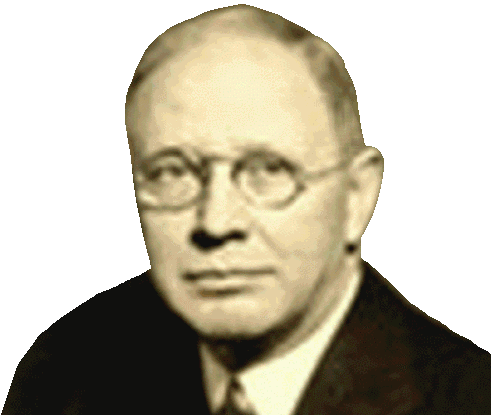
|
|
Clark
Leonard Hull (1884-1952)
|
In his Principles of Behavior27 (1943) Hull introduces a mathematical formulation to
capture the relationship between environmental situations, intervening variables, and learned responses. The
elements of this equation are as follows: Drive, D, (fueled by biological need), Habit Strength, SHR, (the
connection between environmental situation and response measured as the number
of pairings), and Reaction Potential, SER,
(the probability of the subject manifesting a learned response). These yield the equation: SER
= SHR x D.
Hull operationally defines habit strength as the number
of pairings between environmental situation and the response. Drive is operationally defined in terms of the length of deprivation. Hull
continues to introduce additional operationally defined variables to his basic framework throughout his career.
Neo-Behaviorism:
Purposive Behaviorism
Like Hull, Edward Chace Tolman (1886-1959), espouses the use of intervening
variables in the explanation of behavior. However, Tolman differs from Hull in that Tolman supposes animals have
internal states characterizable in terms of their purpose, for instance, expectations and representations.
In his article, “A
New Formula for Behaviorism,”28 (1922) Tolman
explains his perspective to readers:
|
The two essential theses which we wish to maintain in
this paper are, first, that such a true non-physiological behaviorism is really
possible; and, second, that when it is worked out this new behaviorism will be
found capable of covering not merely the results of mental tests, objective
measurements of memory, and animal psychology as such, but also all that was
valid in the results of the older introspective psychology. And this new
formula for behaviorism which we would propose is intended as a formula for all
of psychology--a formula to bring formal peace, not merely to the animal
worker, but also to the addict of imagery and feeling tone. (pp.46-47) |
In several of his works Tolman develops and defends three
important concepts; expectation, cognitive maps, and latent
learning. In his 1932 book, Purposive Behavior in Animals and Men,29 Tolman further
refines his view, arguing against Watson that behavior should not be understood in terms of individual conditioned reflexes and their ordered chains. Rather, Tolman suggests that researchers need
to understand behaviors as goal-directed acts in which component elements are organized to accomplish a purpose.
In Purposive Behavior
and in an earlier paper, "Introduction and Removal of Reward, and Maze
Performance in Rats,"30 Tolman also argues that learning can
occur without reward or
punishment. Specifically, Tolman demonstrates that rats learn the location of food in a maze, and later utilize that knowledge, as a result of wandering around within the maze when they are not
hungry. A phenomenon he calls latent learning (p.344).29,30
In the first of an influential series of papers published
in the Journal of Experimental Psychology31-35 (1946-1949) Tolman and colleagues argue
that rats learn to negotiate radial mazes in virtue of their developing expectancies. Which they define as:31
|
When we assert that a rat expects food at location L,what
we assert is that if (1) he is deprived of food, (2) he has been trained on path P, (3) he is now put on path P, (4) path P is now
blocked, and (5) there are other paths which lead away from path P, one of which points directly to location L, then he will run down the path
which points directly to location L.
When we assert that he does not expect food at location L,what we assert is that, under the same conditions, he will not
run down the path which points directly to location L. (p.430)
|
In “Cognitive
Maps in Rats and Men36 (1948) Tolman introduces the idea of a cognitive map:
|
Rather, the incoming impulses are usually worked over and elaborated in the central control room into a tentative, cognitive-like map of
the environment. And it is this tentative map, indicating routes and paths and environmental relationships, which finally determines what responses, if any, the animal will finally
release. (p.192)
|
|
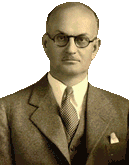
|

|
|
Edward
Tolman (1886-1959)
|
Animation showing 1 the original training maze, 2 the testing maze with the arm
blocked, and 3 an overlay of both mazes showing how the choice of arm 6 by rats illustrates their knowledge of the relative position of the room where
the food is located.
|
Gestalt Psychology
Historians generally locate the start of Gestalt psychology to the 1912 publication of “Experimentelle
Studien über das Sehen von Bewegung” or “Experimental Studies on the Perception of Motion”37 by Max Wertheimer (1880-1943). Wertheimer conducted this research with his two research assistants, Kurt Koffka and
Wolfgang Köhler. The emphasis of their work is the study of perception, particularly the rules by which perceptual
inputs are organized into meaningful wholes. Wertheimer articulates the central doctrines and insights of Gestalt psychology
in his classic paper, “Untersuchungen zur Lehre von der Gestalt” or “Laws
of Organization in Perceptual Forms”38 (1923). Gestalt
psychology contributes to the development of cognitive science in two
ways. First, Gestalt psychology marks a shift in the study of perception away from pure physiology and psychophysiology
towards the cognitive. Second, Gestalt psychologists argue that behavior
is driven as much by insight and problem solving as by classical and operant
conditioning. The influence of gestalt psychologists manifests itself less through a theory than through an ever increasing body of perceptual phenomena that resist explanation by either
introspective techniques or by the reflexive techniques of behaviorists. For instance, Wertheimer articulates several
basic principles by which perceptual forms seem to be organized in Laws of Organization, such as the factor of closure (below), but he does not offer an overarching
framework for understanding vision.
|

|

|

|
|
Max Wertheimer (1880-1943)
|
Animated
gif illustrating the phi phenomenon explored in “Experimental
Studies on the Perception of Motion.” In the phi phenomena properly sequenced lights give rise to the
perception of motion.
|
Examples
illustrating the law of closure in which objects grouped together in
perception are seen as a whole.
|
Wolfgang Köhler (1887-1967) contributes greatly to the development of Gestalt psychology. However, it is through his book, The
Mentality of Apes39 (1917), that he makes his greatest contribution to the
development of cognitive science. In his
book Köhler describes the behaviors of various chimpanzees at the Prussian Academy of
Sciences anthropoid research station. He
argues that these animals seem to learn by insight and problem solving more
than by Thorndike’s trial and error. Among the researchers Köhler
influences is a young Tolman, whose two review papers called "Habit
Formation and Higher Mental Processes in Animals"40,41 (1927,1928)
incorporate the idea of insightful
learning, and analyze results of researchers who replicate and extend Köhler’s
experiments.
|
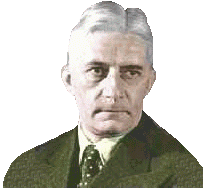
|
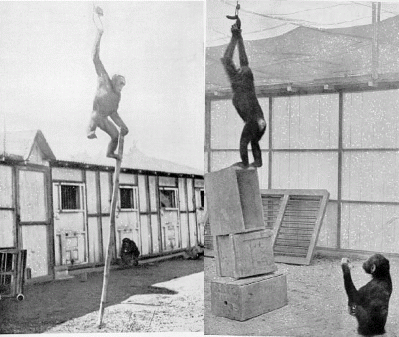
|
|
Wolfgang Köhler (1887-1967)
|
Pictures
taken from The Mentality of Apes showing chimpanzees using various
techniques like stacking boxes to reach suspended fruit.
|
The Mathematical Analysis of Communication and Control
As we will see in the
chapters on the development of the formal treatment of computing and the development of computers, mathematical and techinical developments greatly
facilitate the emergence of an information processing account of cognition.
For now, we will consider four figures central to the development of information theory and cybernetics.
The work of these theorists plays a central role in early information processes accounts because the researchers intended their research to have wide applicability, including both artifical biological
systems.
Norbert Wiener (1894-1964), a mathematician, represents an important influence as well
as a general trend; after WWII research on human performance of skill-based tasks increases dramatically.
These tasks lend themselves to characterization as information processing tasks.
Wiener’s 1943 article, "Behavior,
Purpose and Teleology"42 and his 1948 book, Cybernetics: or Control and Communication in the Animal and the Machine43
represent one important and influential first step in this direction.
In Cybernetics and "Behavior" Wiener introduces such
terms as “input” and “output” in outlining his interdisciplinary approach to the study of complex, goal-oriented systems.
Cybernetics views such systems as
complex systems interacting continuously with the environment through such mechanisms as communication, control, feedback, and self-organization.
Historians often cite the publication of "Behavior, Purpose and Teleology" together with the publication of
“A Logical Calculus of the Ideas Immanent in Nervous Activity”44 by Warren Sturgis McCulloch (1898-1969) and Walter Pitts (1923-1969) as the beginning of the Cybernetics
movement in the 20th century.
In their paper McCulloch and Pitts show how, by interpreting neuronal
activity as on-off (or binary), one can show how44
|
The "all-or-none" law of nervous activity is sufficient to insure that the activity of any neuron may be
represented as a proposition. Physiological relations existing among nervous activities correspond, of course, to relations among the propositions; and the
utility of the representation depends upon the identity of these relations with those of the logic of propositions. To each reaction of any neuron there is a
corresponding assertion of a simple proposition. This, in turn, implies either some other simple proposition or the disjunction or the conjunction, with or
without negation, of similar propositions, according to the configuration of the synapses upon and the threshold of the neuron in question. (p.117) |
From these results,
McCulloch and Pitts conclude:44 "Thus, in psychology, introspective, behavioristic, or physiological the fundamental
relations are those of two-valued logic." (p.131) In addition, McCulloch and Pitts show how logical functions could be computed by circuits created from
neurons (see below).
|
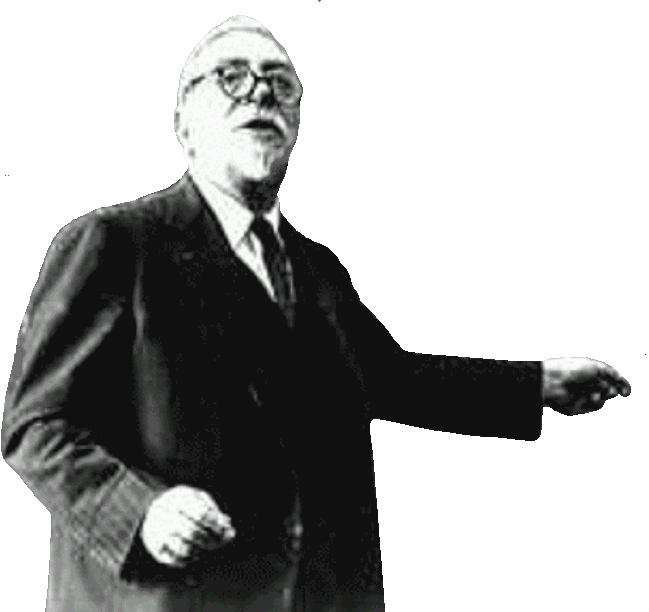
|
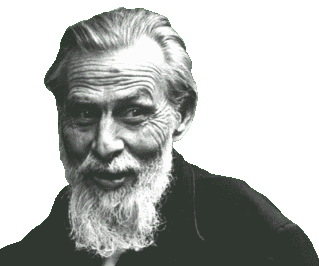
|

|
|
Norbert Wiener (1894-1964)
|
Warren McCulloch
(1898-1969)
|
|

|
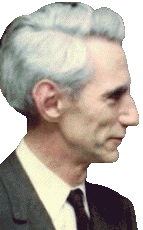
|
|
Walter Pitts
(1923-1969)
|
Claude Shannon (1916-2001)
|
Diagram of neuronal circuits from McCulloch
and Pitts
|
Claude Shannon
(1916-2001), yet another mathematician, lays the foundations of information theory in his 1948 paper, "A Mathematical Theory
of Communication."45
The theory is specifically intended to address the problem of
transmitting information over a noisy channel.
However, it influences theories of perception and mental representation
as well as adding to the general conception of information processing as a
central feature of mentality.
These
four men have an additional connection in that they were all at MIT in 1956,
when one of the significant conferences in the development of cognitive science
occurs—The Second Symposium on Information Theory. While there are a number of important
conferences during this period in both the United States and Britain, many
historians point to the MIT conference in particular.
Information
Processing Psychology
Donald Eric Broadbent (1926-1993), an English
experimental psychologist publishes his book, Perception and Communication,46 in 1958.
It outlines theories of selective attention
and short-term memory using computer analogies. Among the contributions in Broadbent’s book is his filter theory of attention and memory.
On Broadbent’s
theory, the brain holds simultaneously presented sensory input in a short-term sensory memory acting like a recurrent circuit.
These inputs can be retained through rehearsal, but will disappear once
allowed to degrade. Input in the sensory memory can pass through a filter selecting for specific physical signal
characteristics at which point the input enters a limited capacity channel for additional processing.
Once analyzed for
meaning, it enters conscious awareness. Broadbent's model proves important
in two respects: First, it suggests that the brain actively selects among
information. Second, it suggests that the brain has real limitations in
the amount of information it can process.
George Armitage Miller (1920- ), presents a paper at the 1956 MIT conference,
"The Magical Number
Seven, Plus or Minus Two,"48 which he publishes later
that year. The paper outlines experimental work by Miller
and others showing that short-term memory (STM) has a capacity of seven items plus or minus two items.
Miller also
determines that chunking--linking individual items together--allows more complex items to be stored as single items, and improves recall.
Miller’s paper is framed within information
theory. In the paper’s summary, Miller tells readers that48
|
...the span of absolute judgment and the span of
immediate memory impose severe limitations on the amount of information that we are able to receive, process, and remember. By organizing the stimulus input
simultaneously into several dimensions and successively into a sequence or chunks, we manage to break (or at least stretch) this informational bottleneck.
(p.95) |
Miller goes on to co-found
the Center for Cognitive Studies at Harvard and publishes an important book, Plans and the Structure of Behavior,49 in 1960. Plans
explores the potential of cybernetics in psychology through formulating many basic psychological process in terms of plans. They begin their first chapter by telling readers:49
|
The authors of this book believe that
the plans you make are interesting and that they probably have some relation to
how you actually spend your time during the day. You imagine what your day is
going to be and you make plans to cope with it. A Plan is any hierarchical
process in the organism that can control the order in which a sequence of operations
is to be performed. The image is all the accumulated, organized knowledge that
the organism has about itself and its world. This chapter considers what modern
psychology has to say about images and plans. (p.5) |
Development as Inherently Cognitive
Jean Piaget (1896-1980), a Swiss scientist studies
intellectual development in children as early as 1927. His research into development as well as his invention of experimental paradigms and demonstrations resist both
introspective and behavioral explanation. Piaget suggests that the human intellect develops through a series of stages.
According to Piaget’s theory,
humans progress through a series of developmental stages. Each stage represents a movement towards more
abstract symbolic forms of reasoning, and is characterized by a particular schema or structure through which the person interacts with, and understands,
the world.
Piaget considers himself an epistemologist, and writes an
number of works in epistemology. His orientation in investigating development through schemas for understanding the world represents a European tradition
with its origins in Kant. Similar research in other areas of development, for instance, in language acquisition, likewise challenges
introspective and behaviorist perspectives both in terms of the breadth and robustness of development as well as regular timeframes in which development
seems to occur.
|
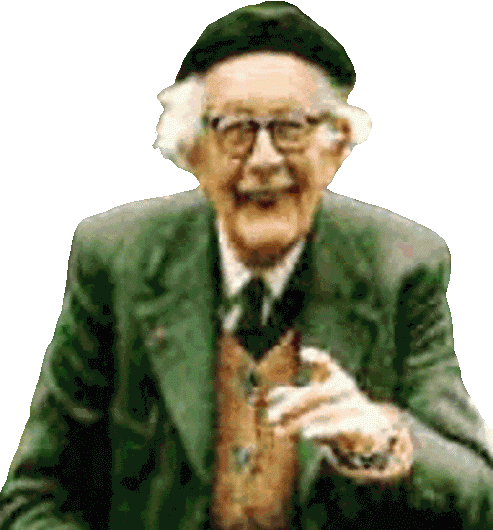
|
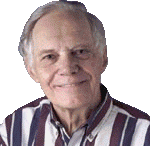
|
|
Jean Piaget (1896-1980)
|
Ulric Neisser (1928- )
|
The
Final Step
Ulric Neisser (1928- ), a student of Miller, helps to catalyze and popularize cognitive
psychology when his book, Cognitive Psychology,50 is published in 1967.
In that book, Neisser tells
readers that48 “Cognitive Psychology refers to all processes by which the sensory input is transformed, reduced elaborated, stored, recovered, and used.” (p.4)
Neisser attempts to integrate work from areas
like perception, thinking, concept formation, and linguistics within a general information-processing framework.
For
instance, Niesser characterizes the research project of the cognitive psychologists by telling readers that50
|
The task of a psychologist in trying to understand human
cognition is analogous to that of a man trying to discover how a computer has
been programmed. In particular, if the program seems to store and re-use information, he would like to know by what
"routines" or "procedures" this is done. Given this purpose, he will not care much whether his particular computer stores
information in magnetic cores or in thin films; he wants to understand the program, not the "hardware". By the same token, it would not help the
psychologist to know that memory is carried by RNA as opposed to some other medium. He wants to understand its utilization, not its incarnation. (p.6) |
Three years after
Neisser publishes Cognitive Psychology the journal Cognitive
Psychology comes into being in 1970. Needless to say, single
events like Neisser's book or the founding of a journal do not mark a sudden
transformation in psychology. Rather, such events are merely indicative of
widespread and temporally extended changes within psychology. Likewise,
the cognitive psychology envisioned by Niesser in the above quote differs from
the cognitive psychology and cognitive science we find today. For example,
the idea that one can ignore the "hardware" in understanding the
software has proven incorrect.
Summary
As we have seen, the development of cognitive psychology
requires several factors to come together; the development of experimental methodologies, the refinement of animal and other models,
increases in the knowledge of human mentality, development, and physiology, and the development of technical ideas such as information and computation. The coalescing of these factors allows for
the conceptual framing of cognitive phenomena as well as its systematic experimental investigation.
Bibliography
| 1. |
Bessel, F.W. Astronomische
Beobachtungen auf der Königlichen Universitäts-Sternwarte in Königsberg von
(Königsberg, 1823). |
| 2. |
Pond, J.
Astronomical Observations Made at the Royal Observatory at Greenwich in the
Year 1832, Part 5: Supplement (London, 1833). |
| 3. |
von Hemholtz,
H.L.F. Fortpflanzungsgeschwindigkeit der Nervenreizung (On the Rate of
Transmission of the Nerve Impulse). Bericht
fiber die Bekanntmachung geeigneten Verhandlungen der KSniglichen Preussischen
Akademie der W issenschaften zu Berlin 4,
14-15 (1850). |
| 4. |
Nicolas, S. On the
Speed of Different Senses and Nerve Transmission. Psychological Research 59,
261-268 (1997). |
| 5. |
De Jaager, J.J. De
Physiologische Tijd bij Psychische Processen: Academisch Proefschrift (de
Hoogeschool te Utrecht). (van de Weijer, Utrecht, 1865). |
| 6. |
Donders, F.C. Die
Schnelligkeit Psychischer Processe. Archiv
fúr Anatomie, Physiologie und wissenschaftliche Medizin 6, 657-681 (1868). |
| 7. |
Wundt, W.M.
Beiträge zur Theorie der Sinneswahrnehmung (Contributions to the Theory of
Sense Perception) (Winter, Leipzig, 1862). |
| 8. |
Wundt, W.M.
Vorlesungen über die Menschen- und Thier-Seele (Lectures on Human and Animal
Psychology) (Voss, Leipzig, 1863). |
| 9. |
Wundt, W.M.
Grundzüge der Physiologischen Psychologie (Principles of Physiological
Psychology) (Engelmann, Leipzig, 1873-4). |
| 10. |
Titchener, E. The
Postulates of a Structural Psychology. Philosophical
Review 7, 449-465. (1898). |
| 11. |
Brentano, F.
Psychologie vom Empirischen Standpunkte (Psychology from an Empirical
Standpoint) (Verlag Ven Dunker & Humblot, Leipzig, 1874). |
| 12. |
Brentano, F.
Psychology from an Empirical Standpoint (Routledge, New York, NY, 1995). |
| 13. |
Nisbett, R.E. &
Wilson, T.D. Telling More Than We Can Know: Verbal Reports on Mental Processes.
Psychological Review 84 231-259
(1977). |
| 14. |
Ebbinghaus, H. Über
das Gedächtnis (Verlag Von Dunker & Humblot, Leipzig, 1885). |
| 15. |
Ebbinghaus, H.
Memory: A Contribution to Experimental Psychology (Columbia University Teachers
College, New York, 1913). |
| 16. |
James, W. The
Principles of Psychology (Henry Holt & Co., New York, NY, 1890). |
| 17. |
Dewey, J. The Reflex Arc Concept in Psychology. Psychological Review 3, 357-370 (1896). |
| 18. |
Thorndike, E.L.
Animal Intelligence (The Macmillan Company, New York, NY, 1911). |
| 19. |
Pavlov, I.
Conditioned Reflexes: An Investigation of the Physiological Activity of the
Cerebral Cortex (Oxford University Press, London, 1927). |
| 20. |
Tolochinov, I.F.
Contributions à l'étude de la Physiologie et de la, Psychologie des Glandes
Salivaires. Congress of Natural Sciences
in Helsingfors Proceedings (1903). |
| 21. |
Watson, J. Psychology
as the Behaviorist Views It. Psychological
Review 20, 158-177 (1913). |
| 22. |
Watson, J.B.
Behavior: An Introduction to Comparative Psychology (Henry Holt and Company, New
York, NY, 1914). |
| 23. |
Skinner, B.F. The Behavior of Organisms (Appleton-Century-Crofts, New York, NY 1938). |
| 24. |
Skinner, B.F. Verbal Behavior (Appleton-Century-Crofts, East Norwalk, CT, 1957). |
| 25. |
Chomsky, N. A Review of Skinner's Verbal Behavior. Language 35, 26-58 (1959). |
| 26. |
Hull, C.L. The Conflicting Psychologies of Learning--A Way Out. Psychological Review 42,
491-516 (1935). |
| 27. |
Hull, C.L. Principles of Behavior, an Introduction to Behavior Therapy (D. Appleton-Century, New York, NY, 1943). |
| 28. |
Tolman, E.C. A New Formula for Behaviorism. Psychological Review 29, 44-53 (1922). |
| 29. |
Tolman, E.C. Purposive Behavior in Animals and Men (Century, New York, NY, 1932). |
| 30. |
Tolman, E.C. & Honzik, C.H. Introduction and Removal of Reward, and Maze Performance
in Rats. University of California Publications in Psychology 4, 257-275 (1930). |
| 31. |
Tolman, E.C. Studies in Spatial Learning. I. Orientation and the Short-Cut. Journal of Experimental Psychology
36, 13-24 (1946). |
| 32. |
Tolman, E.C. & Gleitman, H. Studies in spatial learning: VII. Place and response learning under different degrees of motivation.
Journal of Experimental Psychology 39, 653-659 (1949). |
| 33. |
Tolman, E.C., Ritchie, B.F. & Kalish, D. Studies in spatial learning. II. Place learning versus response learning.
Journal of Experimental Psychology 36, 221-229 (1946). |
| 34. |
Tolman, E.C., Ritchie, B.F. & Kalish, D. Studies in spatial learning. IV. The transfer of place learning to other starting paths.
Journal of Experimental Psychology 37, 39-47 (1947). |
| 35. |
Tolman, E.C., Ritchie, B.F. & Kalish, D. Studies in spatial learning. V. Response learning
vs. place learning by the non-correction method. Journal of Experimental Psychology 37, 285-292 (1947). |
| 36. |
Tolman, E.C. Cognitive Maps in Rats and Men. Psychological Review
55, 189-208 (1948). |
| 37. |
Wertheimer, M. Experimentelle Studien über das Sehen von Bewegung (Experimental Studies on the Perception of Motion).
Zeitschrift Für Psychologie 61, 161-265 (1912 ). |
| 38. |
Wertheimer, M. Untersuchungen zur Lehre von der Gestalt (Laws of Organization in Perceptual Forms).
Psycologische Forschung 4, 301-350 (1923). |
| 39. |
Köhler, W. The Mentality of Apes (Routledge and Kegan Paul Ltd., London, 1926). |
| 40. |
Tolman, E.C. Habit Formation and Higher Mental Processes in Animals.
The Psychological Bulletin
24, 1-35 (1927). |
| 41. |
Tolman, E.C. Habit Formation and Higher Mental Processes in Animals.
ThePsychological Bulletin
25, 24-53 (1928). |
| 42. |
Rosenblueth, A., Wiener, N. & Bigelow, J. Behavior, Purpose and Teleology". Philosophy of Science
10, 18-24 (1943). |
| 43. |
Wiener, N. Cybernetics: or Control and Communication in the Animal and the Machine (MIT University Press, Cambridge, MA, 1948). |
| 44. |
McCulloch, W.S. & Pitts, W. A Logical Calculus of the Ideas Immanent in Nervous Activity. Bulletin of Mathematical Biophysics
5, 115-133 (1943). |
| 45. |
Shannon, C. A. Mathematical Theory of Communication. The Bell System Technical Journal
27, 379-423 623-656 (1948). |
| 46. |
Broadbent, D.E. Perception and Communication (Pergamon Press, Elmsford, NY US, 1958). |
| 47. |
Broadbent, D.E. A Mechanical Model for Human Attention and Immediate Memory. Psychological Review
64, 205-215 (1957). |
| 48. |
Miller, G.A. The Magical Number Seven, Plus or Minus Two. Psychological Review
63, 81-97 (1956). |
| 49. |
Miller, G.A., Galanter, E. & Pribram, K.H. Plans and the Structure of Behavior (Henry Holt and Co, New York, NY US, 1960). |
| 50. |
Neisser, U. Cognitive Psychology (Appleton-Century-Crofts, East Norwalk, CT US, 1967). |
|
|
|
|
|
|
|
|























